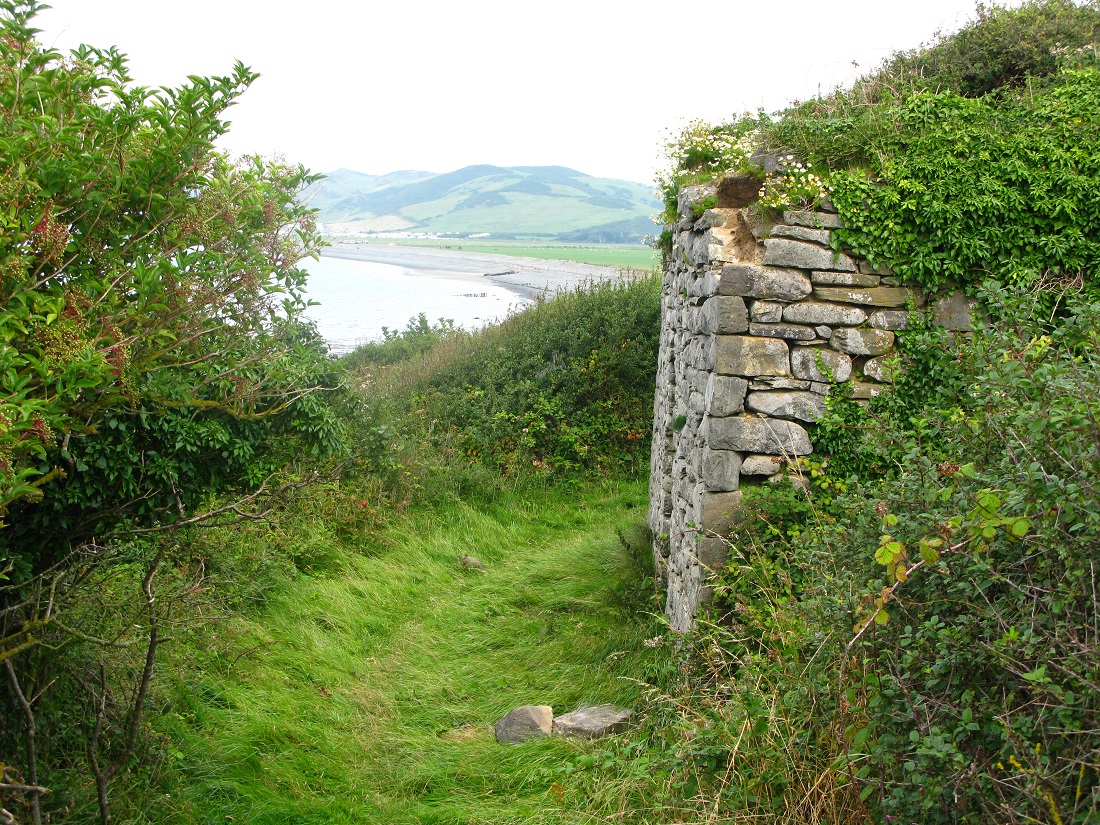Llanrhystud – Llanon Lime Kilns over look the coastline and beach between Llanrhystud and Llanon. Located off the A487 road and along the coastal footpath in the county of Ceredigion, nine miles South of Aberystwyth, Wales.
Llanrhystud – Llanon Lime Kilns over looking Beach
Remains of Llanrhystud lime kilns, where limestone was burnt before being spread on the land to improve soil quality.
In the eighteenth and nineteenth centuries lime was one of the most wide spread non-food manufactured products. Although used in many different manufacturing processes, the one principal use in Cardiganshire was for agriculture.
In agriculture lime was used as a “manure” on the heavy soils in order to make them more open and friable, to improve drainage and to make the land more easily worked to a good tilth. Lime is an essential plant food and its presence is essential in fair quantity to produce good crops. To correct soil acidity lime has a beneficial effect which converts the organic matter of the soil into soluble plant food.
Lime has been used in building since Roman times. Mortar for laying masonry was made by mixing lime with sand, and to make concrete the lime was mixed with an aggregate such as crushed or natural stone. Plaster had backing coats of a similar mix to mortar, with a neat setting coat of neat lime. Lime putty was used to set fine brickwork and masonry. Lime white is a mixture of lime and water and was used for white washing walls, the traditional “whitewash”. The material from which lime is derived is calcium carbonate (CaCO3) which occurs naturally as limestone or chalk, although there are other sources throughout the world such as coral and shells. Limestone was shipped in sloops to Llanrhystud.
When calcium carbonate is burnt at a temperature of 900°C, carbon dioxide is driven off and the calcium oxide is left. (CaCO3 = CaO + CO2). This is known as quick lime due its violent reaction when mixed with water (slaking). The resultant product is calcium hydroxide (Ca(OH)2) or slaked lime. For agricultural purposes the quick lime was applied directly onto the fields, but for building purposes the lime was slaked in large vats and stored for several months to mature. In use it is then mixed with sand to produce “course stuff” for mortar or rendering coats for plasters.
These Kilns were mainly in the form of shaft or bottle kilns and would have probably been used as continuously burning mixed feed kilns.

